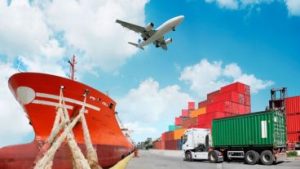Trabajo practico
Alumno: Yago Gramajo
Carrera: régimen aduanero
Materia: ingles
Tema: “historia” terminal río de la plata
Year 1993
The National government called the National and International bid N° 6/93 for the concession of the port of Buenos Aires.
Year 1994
November
As a result of the bid called in 1993, Terminales Rio de la Plata became responsible for port operations of piers 1 and 2 of Puerto Nuevo.
The current Port Terminal, which is modern and efficient, is the result of a strenuous construction work, carried out mainly during the first years of the concession.
From open port to closed port.
Deteriorated berths, obsolete cranes, warehouses and transit hangars were part of the old infrastructure of the port.
Open space of free access, not only for the people working in the port but also for anyone who might want to enter; a practice that entailed security-related risks.
December
New equipment was purchased for the overhauling of the existing infrastructure. In December 1994, three gantries and 7 RTGs were taken from Basin F to TRP berths; these berths were being repaired at that moment.
Year 1995
Demolishing and Building
It was necessary for the terminal to demolish four-storey buildings with a basement and wide concrete walls, to remove old rails and a gas station, to make pavements, among other works, in order to provide adequate services.
More equipment
That same year, a new gantry and 4 RTGs were acquired by TRP.
Year 1996
The Pre-Reception Building was opened.
The Social Plan was put into practice through an elementary school for adults in the company premises.
Safety
The promotion of the widespread use of personal protection devices was one of the first actions taken. A Safety Committee was formed and evacuation drills were carried out.
Uninterrupted Service
While Terminales Río de la Plata was under construction, service to customers was never interrupted. This was possible thanks to the team work that characterized the company’s way of working. The members of TRP staff had a challenge ahead: the transformation of the port.
Year 1997
January
The Empties yard was finished.
TRP ranked second in Safety and Environment, granted by P&O Ports.
Year 1998
It was a consolidation year. The most important civil works were completed and the container number 1.000.000 started to operate.
TRP acquired the first RTGs with static frequency converters, high-tech machines, unique in the country at that time.
Year 1999
Informatics systems began to support port operations.
March
TRP certified quality standards: ISO 9001.
Year 2000
TRP certified the Environment Management System: ISO 14.001 standard.
Year 2001
The cruiser terminal “Benito Quinquela Martín” was built.
Year 2003
TRP and TPA merged and started joint operations.
Infrastructure works were carried out in order to overhaul the third pier. New pavements were built, a new lighting system was installed and exit gates were refurbished.
Year 2005
The first Post-Panamax gantry crane arrived at the Terminal, being the following its most outstanding features: 100 metres long, 66 metres high and 31 metres wide, 1150 tons weight. It has a 45-metre outreach (crane projection over the water). This capacity enables the stevedoring of containers carried by Post-Panamax vessels, with a 66,3-ton hoisting capacity of maximum load in an ISO 40´container or two ISO 20 containers in Twinlift.
Year 2006
More RTGs cranes arrived —this time 6+1 feet tall— once again, unique in Argentina at that time
Year 2007
TRP kept on renewing its machinery. More Reach Stacker Cranes and Tractors were acquired.
Year 2008
The second Post-Panamax gantry crane arrived.
15 internal transfer trucks were added.
The new Reefer station, in Pier 3, increased the Terminal connection capacity.
The area of the former EMBA enlarged the Terminal capacity to 831.000 TEUs.
TRP received 4 new Reach Stackers, two of them to be used in the empty containers area and the other two to operate full containers.
Year 2009
TRP acquired four RTGs with a 6+1-capacity and a Super Post Panamax crane






